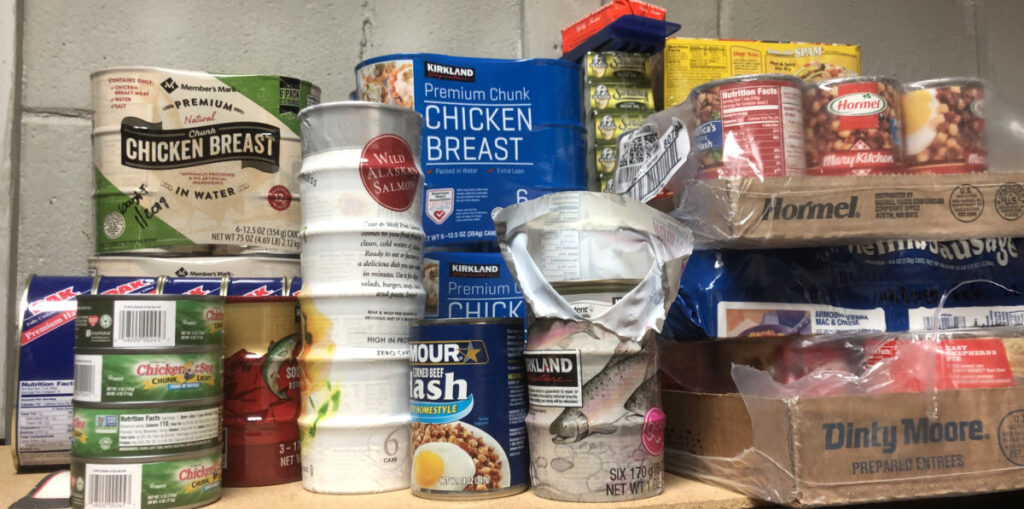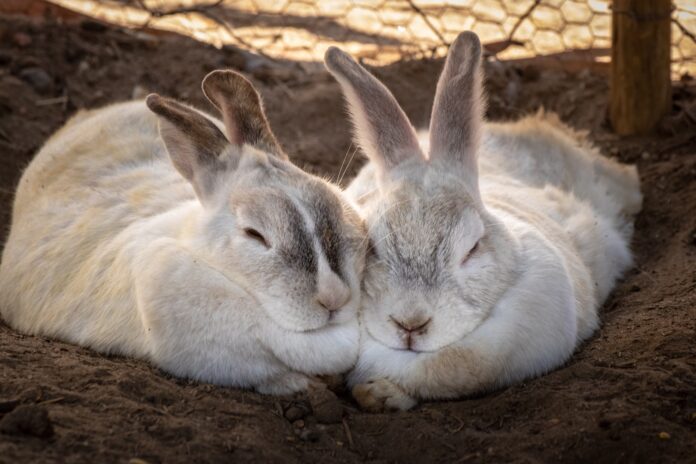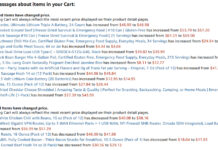I priced rabbits today at Rural King and they were about $42 each. Yikes! After buying chicks for just a few dollars each, I was shocked at the higher cost. Of course, rabbit pens would be cheaper and easier to construct than the chicken coop and run. I think three does and a buck should generate enough bunnies to butcher eat at least one per week. I figure my start-up costs would maybe $300 plus food.
I’m not ready to take that step yet. I want to get the chickens laying and butcher and eat a few birds first. They are my proof of concept, so to speak. Can we breed and raise enough chickens to help feed us during a collapse or food crisis? Will my chickens survive the weather and the predators long enough to lay eggs? Will they become broody enough to hatch their own eggs and raise their own chicks? Can we feed them if there is no commercial feed available?
Maybe I will consider rabbits next year. In the meantime, a dog is probably ahead of them on the list. (Don’t worry, the dog is not for eating. If I want to eat dog meat, I’ll just kill a coyote.)
I Want Meat in our Stores
I know there are vegetarians and vegans out there who live healthy and full lives, but that is not me. In a full-blow post-SHTF event, I doubt it will be them either unless they live in a subtropical climate or have several acres of garden. Too much of what vegans eat is raised elsewhere and transported to them, a practice that will cease after any major disaster.
I have more than a ton of rice, wheat, oatmeal, and other grains in storage and hundreds of pounds of beans, mostly in 5-gallon pails with some #10 cans mixed in. That provides plenty of arbs and some protein, but it doesn’t provide much fat.
Meat is a good source of protein and fat, which are often absent in survival foods, as I discuss in detail in this post. Protein and carbohydrates both have four calories per gram while fat has 9 calories per gram. That’s why a can of Spam provides so many calories. Meat is dense in needed micronutrients.
We have stored bottles of olive oil, which have a limited shelf life, and coconut oil, but not many other fats. Without dairy cows or goats, we are looking at meat as our sustainable source of fat.
I have just 18 cans of freeze dried meat and maybe a dozen cans of Mountain House freeze dried meals with meat in them. There are a couple hundred MRE entrees, but they are rapidly reaching the end of their shelf life.
I’ll eat rice and beans if that’s all we have, but I would hope we could have a couple of meals per week with meat in them, especially in the winter.
Canned Meat
I have 42 cans of chicken in our store room, each 12 ounces, which I figure is enough meat for four servings. I have 36 cans of Spam, also good for four meals each. When served with rice, pasta, quinoa, ramen, served on bread, or added into soup, that’s about 312 meals.
Then there’s the canned turkey, ham, beef stew, chili, corned beef, roast beef, tuna, salmon, and a few cans of soup. Maybe enough for another 312 meals. If it is just my wife and I, we have enough canned products containing meat to give us one serving of meat every day for a year. If we are facing moderate food shortages, rapidly rising prices, or other disruptions, our canned meat will be a valuable addition to what food is available in stores and at the farmers market.

Should we see a full-on TEOTWAWKI situation which results in a massive societal breakdown or collapse, stored food could be even more important. If our kids and their significant others come to stay with us in an emergency, the increase in numbers brings us down to a four-month supply. If another prepper family joins us, and in a serious collapse they would be very helpful, then the canned meat will be sufficient to make just 60 meals.
After that, we’ll be down to whatever we can catch or raise. And I expect everyone else in the area will be hunting and fishing. We may be in a remote area with lots of uninhabited land, but the supply of wild game will be limited. That’s when our domestic livestock, their ability to reproduce, and our ability to protect and feed them will become enormously important.







